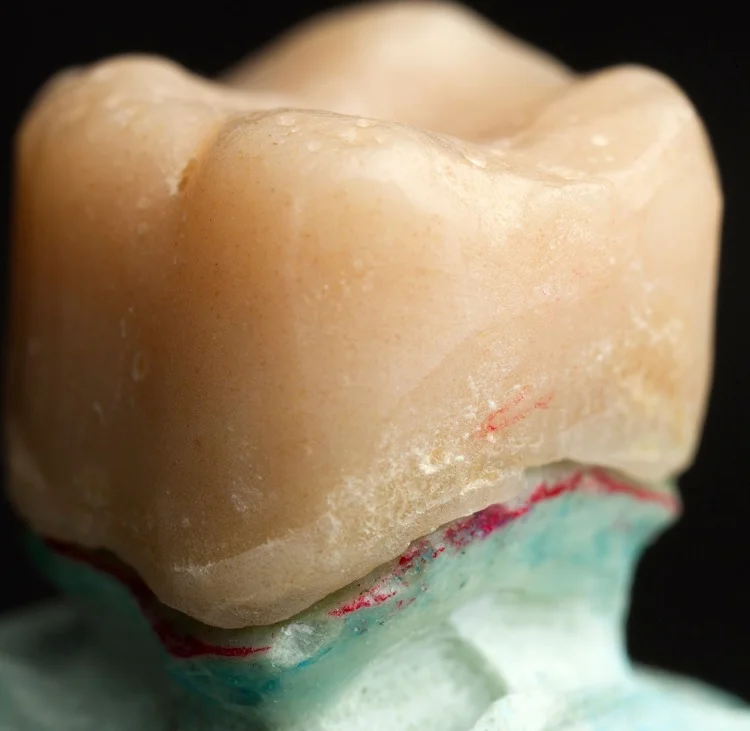Last Updated on: 18th July 2024, 05:21 pm
✓ Fact Checked 🕓
❙ Our team of writers, editors, and medical experts rigorously evaluates each article to ensure the information is accurate and exclusively cites reputable sources.
❙ We regularly assess how the content in this article aligns with current scientific literature and expert recommendations in order to provide the most up-to-date research.
Dental resorption is a serious dental condition that requires immediate attention. This comprehensive guide covers everything you need to know. Discover the signs, symptoms, and prevention strategies as well as the available treatment options.
What is dental resorption?
This is an abnormal condition that occurs when part of the dental tissue is lost, either by the action of cells that destroy the tissue, or the surrounding tissues that damage or “reabsorb” the tooth. Can occur anywhere in the tooth.
What are the types of dental resorption?
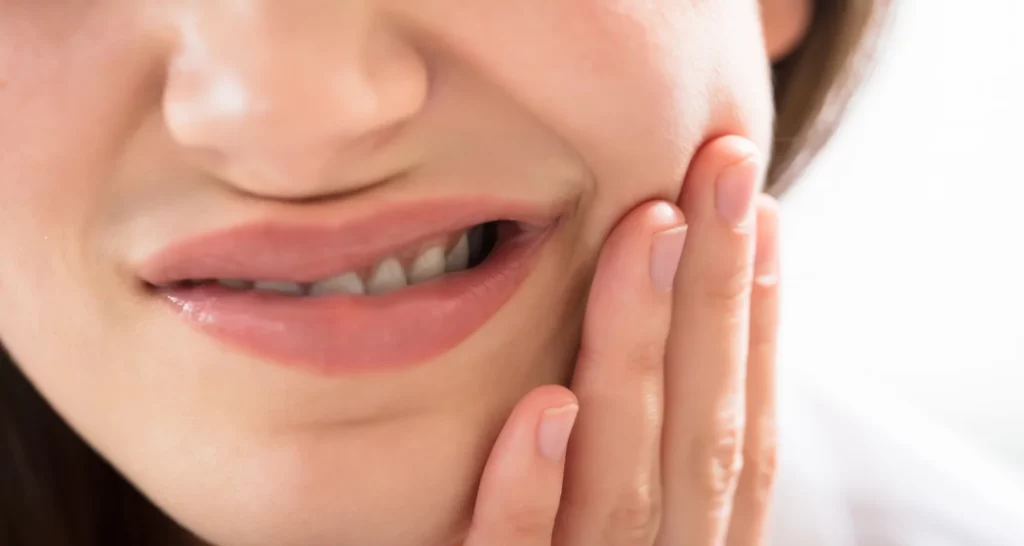
There are two main types:
1. External resorption:
● Occurs on the external surface of the tooth.
● Is the most common.
● Bone cells or the presence of other teeth destroy dental tissue, causing loss of structure.
● It can be caused by factors such as bone pressure, contact with an adjacent tooth, dental infection, or injury.
2. Internal resorption:
● It occurs inside the root of the tooth.
● Dental pulp cells (the soft tissue inside the tooth) start to destroy dental tissue, causing the loss of dental structure.
● It is usually detected with radiographic images.
Why does dental resorption occur?
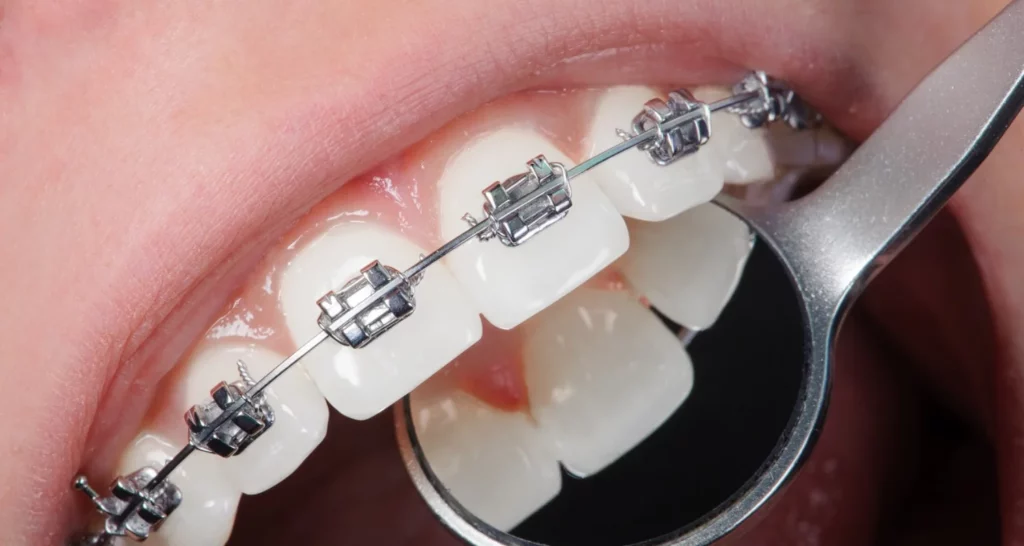
Several causes can contribute to dental resorption. Among them are:
1. Dental trauma: can be caused by trauma to the tooth, such as a fracture or injury.
2. Dental infection: Untreated dental infections can cause dental resorption.
3. Impacted teeth: When teeth get stuck inside the bone or try to come out in the wrong position, they can resorb the tissue of another tooth, damaging its structure.
4. Orthodontics: Excessive pressure exerted by brackets or wires. This risk increases if the patient has already undergone other orthodontic treatments in the past.
5. Dental reimplantation or transplantation surgery: When a tooth is lost or extracted and inserted back into the bone, the risk increases.
What are the symptoms of dental resorption?
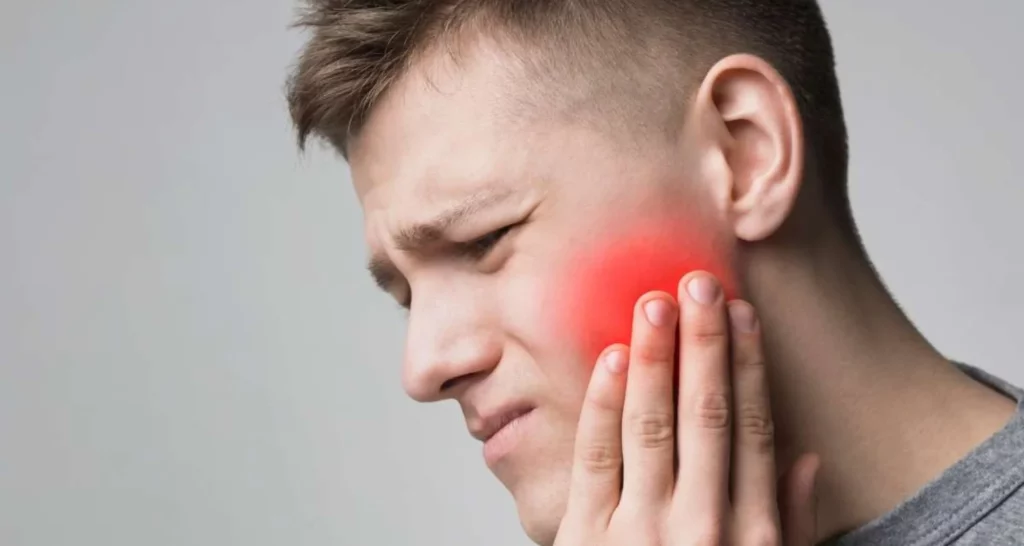
Most of the time, patients do not present symptoms. However, depending on the type and severity of the condition, the following may occur:
● Pain
● Pink or grayish dental discoloration
● Dental fractures
● Cavities in the teeth
● Spaces between the teeth
● Gum inflammation
How is dental resorption diagnosed?
Are usually detected through a combination of methods:
1. Dental exam: The dentist evaluates the condition of the teeth, looking for signs and symptoms of resorption, then applying sensitivity tests to cold and/or hot stimuli.
2. Interview: Dental history is important for diagnosing. The dentist may ask about the presence of symptoms, episodes of trauma, or orthodontic treatments performed in the past.
3. Diagnostic imaging: Most are discovered through diagnostic imaging. Although X-rays can detect some lesions due to resorption, tomography provides more reliable, detailed, and truthful information, so your dentist may recommend this exam.
Can I have dental resorption without knowing it?
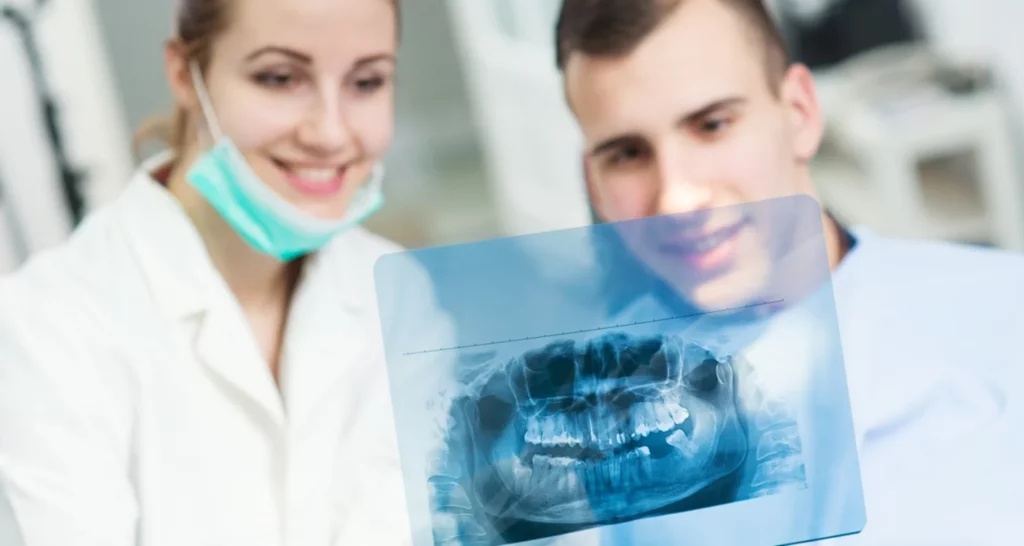
The answer is yes. A study by the University of California showed that one-third of root resorptions are incidentally discovered during diagnostic imaging because patients do not present symptoms.
What is the treatment for dental resorption?
After identifying the extent of the lesion and its location, the treatment aims to stop the damage to the dental tissue to preserve the tooth. Treatment options depend upon the type and severity of the condition and may include one or several of the following:
● Root canal treatment:
If it has affected the dental pulp, endodontic treatment may be required to remove the affected tissue and prevent the spread of the condition. It is likely that more than one appointment will be needed to finalize this treatment.
● Dental restoration:
The placement of a dental crown or composite restorations may be necessary to protect the affected tooth and restore its function and appearance.
● Extraction and replacement of the tooth:
When it has caused a significant loss of dental structure, dental extraction may be required. Subsequently, a prosthodontist could replace it using a prosthesis, a fixed bridge, or a dental implant.
It is important to mention that in some cases, when it is detected in time, and the cause of the damage is eliminated, the dentist may decide not to perform any treatment and monitor the condition of the tooth over time.
What happens if dental resorption is not treated in time?
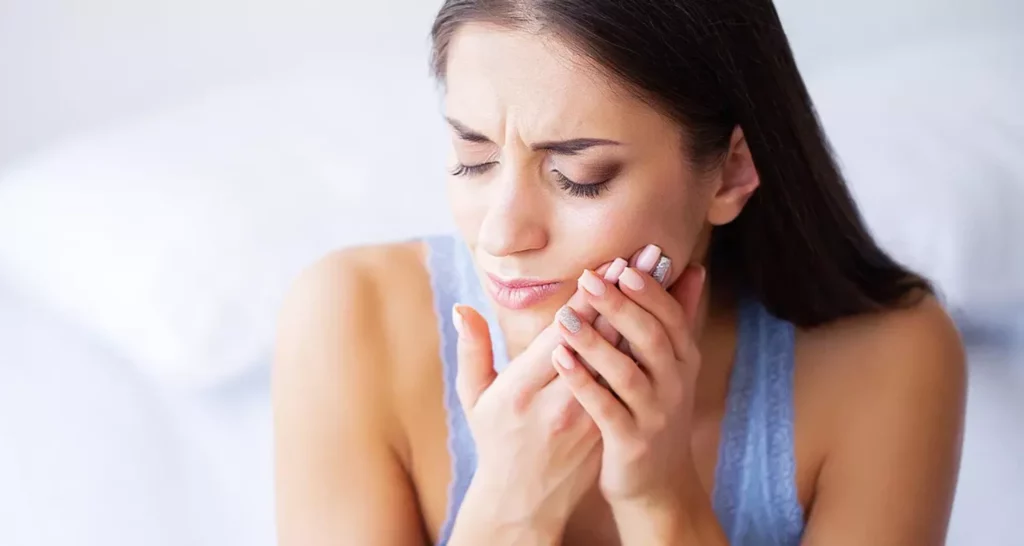
Possible complications include:
● Infection
● Dental fractures due to weakening of the structure
● Color changes in the tooth
● Large cavities or holes
● Pain in advanced cases
● Dental loss
How to prevent dental resorption?
Preventing it can be difficult since the cause of the condition is not always established. Nevertheless, some measures can help prevent, including:
● Maintaining good oral hygiene: Brushing your teeth three times a day with fluoride toothpaste, using dental floss, and regularly visiting the dentist are behaviors that help prevent dental caries and other.
● Performing orthodontic treatments with a properly trained professional: Orthodontics performed by untrained individuals increases the risk of applying excessive forces to the teeth. Therefore, it should always be verified that the healthcare provider is authorized to provide this service.
● Avoiding dental injuries: The use of mouthguards is recommended in patients with bruxism or who practice sports that increase the risk of dental fractures.
Conclusion
● Dental resorption is a serious condition that may involve tooth loss if not treated in time and correctly.
● If it is suspected, it is important to consult a dentist or endodontic specialist for timely evaluation and diagnosis.
● Early diagnosis can help prevent tooth loss and other dental complications.
Frequently Asked Questions
What is dental resorption?
Is an abnormal condition where part of the dental tissue is lost due to cells destroying the tissue or surrounding tissues reabsorbing the tooth. It can occur anywhere in the tooth.
What are the types of dental resorption?
The two main types are external resorption, which occurs on the tooth’s external surface, and internal resorption, which happens inside the root. External resorption is often caused by pressure, infection, or injury, while internal resorption is usually detected with radiographic images.
What causes dental resorption?
Can be caused by dental trauma, untreated infections, impacted teeth, excessive orthodontic pressure, or dental reimplantation/transplantation surgery.
What are the symptoms of dental resorption?
Symptoms can include pain, pink or grayish discoloration of the tooth, fractures, cavities, spaces between teeth, and gum inflammation. However, many patients may have no symptoms.
How is dental resorption treated?
Treatment aims to stop the damage and preserve the tooth. Options include root canal treatment, dental restoration with crowns or composites, and extraction with replacement via prosthesis, bridge, or implant. Early detection may sometimes allow for monitoring instead of immediate treatment.
Share:
References
1. Cirino, E. (Mau 29, 2019). Resorption of teeth: Causes, symptoms, and what to do. Healthline. https://www.healthline.com/health/dental-and-oral-health/resorption
2. Dexter, A. (s/f). Tooth resorption: Internal, external, causes, symptoms, and treatment. Dentaly.org. Recovered April 21, 2023, of https://www.dentaly.org/us/oral-health/tooth-resorption/
3. What is external resorption? (s/f). WebMD. Recovered April 21, 2023, of, de https://www.webmd.com/oral-health/what-is-external-resorption
4. Differentiating Resorption. (Jan 5, 2021). American Association of Endodontists. https://www.aae.org/specialty/differentiating-resorption/
5. Dao, V., Mallya, S. M., Markovic, D., Tetradis, S., & Chugal, N. (2022). Prevalence and Characteristics of Root Resorption Identified in Cone-Beam Computed Tomography Scans. Journal of Endodontics, 49(2), 144-154. https://doi.org/10.1016/j.joen.2022.11.006
6. Datana, S., & Radhakrishnan, V. (2011). Internal resorption: an unusual form of tooth resorption. Medical journal, Armed Forces India, 67(4), 364–366. https://doi.org/10.1016/S0377-1237(11)60087-7
7. Ne, R. F., Witherspoon, D. E., & Gutmann, J. L. (1999). Tooth resorption. Quintessence international (Berlin, Germany : 1985), 30(1), 9–25.
8. Aidos, H., Diogo, P., & Santos, J. M. (2018). Root resorption classifications: a narrative review and a clinical aid proposal for routine assessment. European endodontic journal, 3(3), 134.


